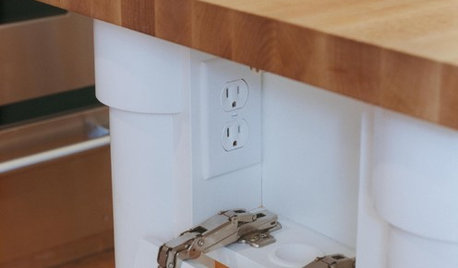Outlets Downstream From GFCI In Branches?
John Liu
12 years ago
Related Stories

KITCHEN DESIGNHow to Hide Those Plugs and Switches
5 ways to camouflage your outlets — or just make them disappear
Full Story
CHRISTMASHow to Light Your Christmas Tree Like a Pro
Give yourself frustration-free tree lighting this year — the trick is clever cord management
Full Story
CONTRACTOR TIPSBuilding Permits: 10 Critical Code Requirements for Every Project
In Part 3 of our series examining the building permit process, we highlight 10 code requirements you should never ignore
Full Story
GARDENING AND LANDSCAPINGLight Your Patio, Extend Your Evening
Cast a magical spell on a summer night with decorative outdoor lighting as sleek or as rustic as you please
Full Story










tom_o
bus_driver
Related Professionals
Ashland Electricians · Murraysville General Contractors · DeRidder General Contractors · McPherson General Contractors · Parma General Contractors · Poquoson General Contractors · Torrington General Contractors · Winfield General Contractors · Wolf Trap General Contractors · Austintown General Contractors · Brockton Solar Energy Systems · Imperial Beach Solar Energy Systems · Burlingame Home Automation & Home Media · Scottsdale Home Automation & Home Media · South Lake Tahoe Home Automation & Home Mediaciv_IV_fan
brickeyee
John LiuOriginal Author
brickeyee
civ_IV_fan
bus_driver
Billl
brickeyee
Billl